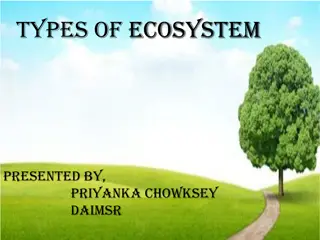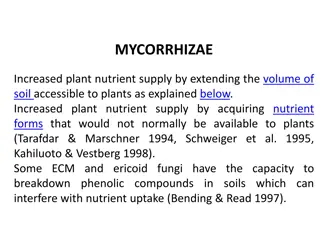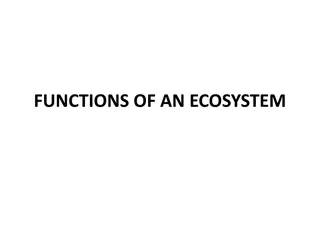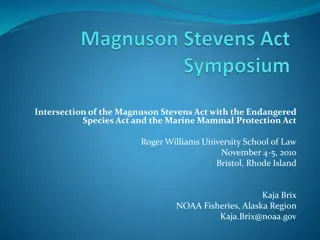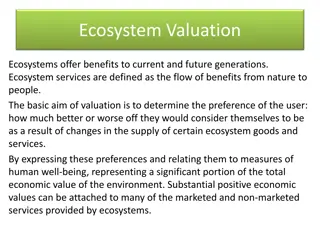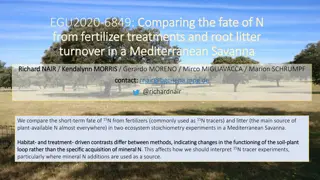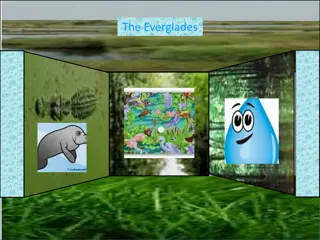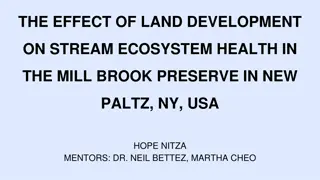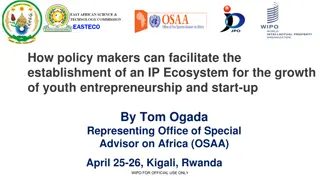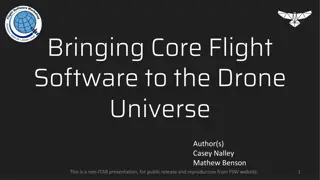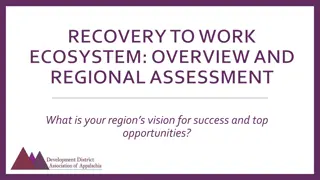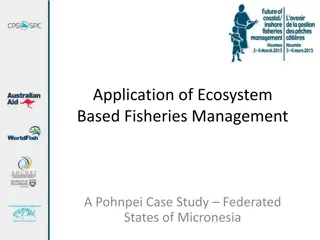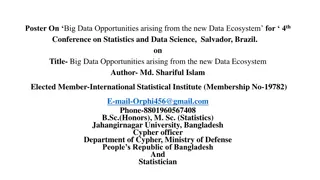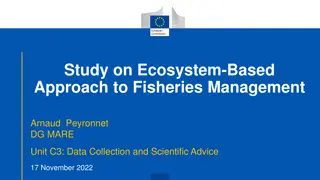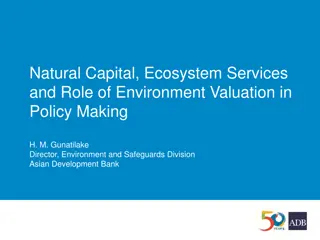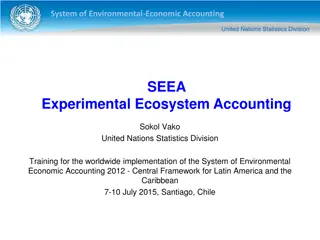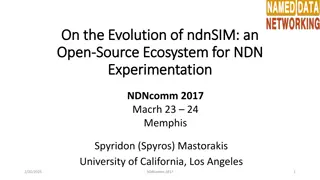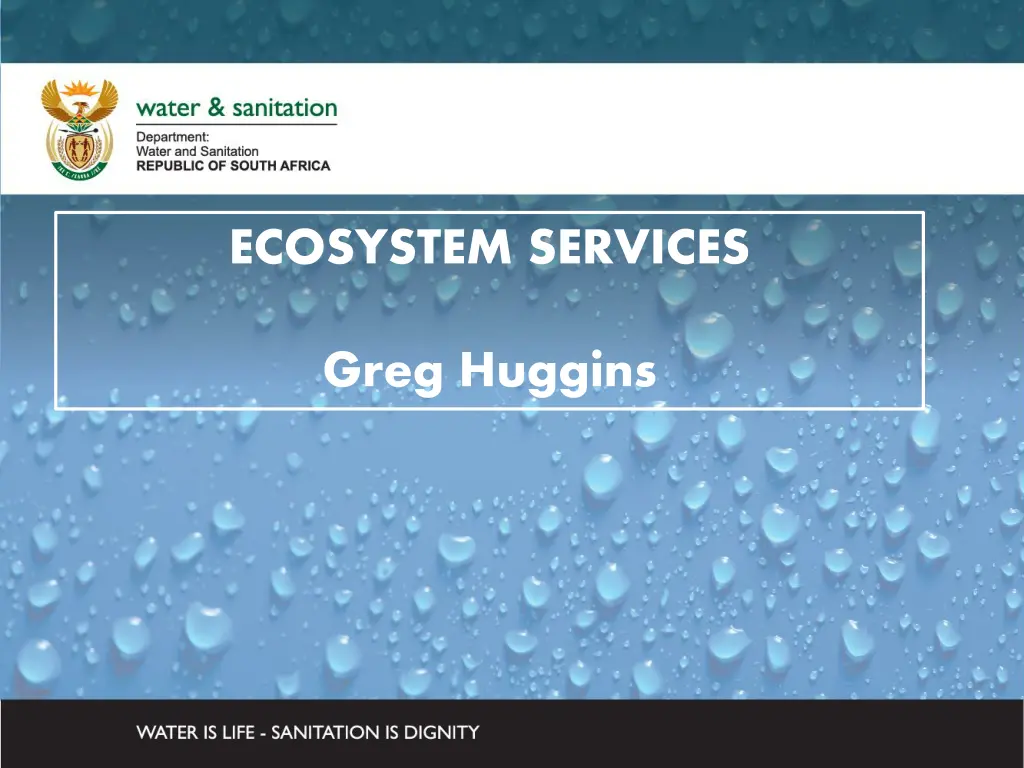
Understanding Ecosystem Services and Rural Economics
Explore the concept of Ecosystem Services and its link to Rural Economics, focusing on the value provided by rivers and associated ecological systems. Learn how stakeholders are concerned about the integration of rural economics into decision-making processes.
Download Presentation

Please find below an Image/Link to download the presentation.
The content on the website is provided AS IS for your information and personal use only. It may not be sold, licensed, or shared on other websites without obtaining consent from the author. If you encounter any issues during the download, it is possible that the publisher has removed the file from their server.
You are allowed to download the files provided on this website for personal or commercial use, subject to the condition that they are used lawfully. All files are the property of their respective owners.
The content on the website is provided AS IS for your information and personal use only. It may not be sold, licensed, or shared on other websites without obtaining consent from the author.
E N D
Presentation Transcript
ECOSYSTEM SERVICES DWA CORPORATE IDENTITY Presented by: Johan Maree Deputy Director: Media Production Greg Huggins 12 December 2012
Ecological Goods & Services Attributes (EGSA) EGSA are the goods and services provided by the river (and associated ecological systems) that result in a value being produced for consumers. EGSA are now referred to as Ecosystem Services. Provisioning services are the most familiar category of benefit, often referred to as ecosystem goods , such as foods, fuels, fibres, medicine, etc., that are in many cases directly consumed. Other services include cultural services (ritual use of rivers, aesthetic or historical importance) regulating services (e.g. water quality inputs), and supporting services (e.g. nutrient formation)
Socio and Rural Economics Concern as to how this has been dealt with - stakeholders, consultants, DWA Concern possibly linked to use of terms and way in which results are presented Stakeholders primary concern appears to be that what they term rural economics is a) poorly understood and b) potentially undervalued and c) not integrated into overall decision making process.
Socio and Rural Economics Brief in this study is to look at two separate components (packages)of the overall Socio-Economics but to integrate in final analysis. Package 1- Economics linked to market and broader economic parameters more from William later Package 2 Ecosystem Goods and Services/Ecological Goods and Services Attributes (EGSA), Ecological Infrastructure = Ecosystem Services Rural Economics how does this fit
Socio and Rural Economics Our approach: Water abstracted from the river and utilised/value added falls within the ambit of economics Water that remains in the river but provides goods/services that generate value falls within the ambit of Ecosystem Services
Rural Economics What does this mean? Largely associated with the use that people derive from water and under circumstances that value is attached. Eg: Vegetable/home gardens that are watered Stock watering Taxi washing Small scale businesses eg, hair salons Host of others
Rural Economics For the most part these fall within the ambit of Economics as it is water that is abstracted from the river. Not all of this may be accounted for as it forms part of the informal sector Some of it is part of the Ecosystem Services esp. some aspects of provisioning services
SCENARIO CONSEQUENCES: ASSESSMENT STEPS STEP 1 STEP 2 Populate Ecosystem list and generate spreadsheet with biophysical input. Fish and Veg: Abundance and importance for use (1- 5 score) With stock watering, sand mining etc link to provisioning services Analyse the site status quo. Identify the communities likely to derive benefits from ESS List the range of ESS available
SCENARIO CONSEQUENCES: ASSESSMENT STEPS STEP 3: EVALUATE CHANGE PER SC STEP 2 con Regulating Services issues of wq, flood attenuation, stream flow regulation, groundwater recharge. Cultural Services: linked to ecotourism, rural utilisation, aesthetic appeal Supporting services are linked to the generation of floodplains for cultivation and nutrient deposition ID the potential change that each of the key ESS may undergo in each of the scenarios. Change is measured against a base score of 1 represents the status quo. Where scenarios are the same or very similar they are evaluated together.
SCENARIO CONSEQUENCES: ASSESSMENT STEPS STEP 4: AGGREGATE THE STEP STEP 3 cont Each category rated out of 1 Sum the numbers of each service, devide by number of services, and rate each service out of 1 Therefore, have number relative to 1 for each service. The potential change will be noted as a factor, EG, no change = 1, a 50% increase = 1.5, and a 20% decrease = 0.8. A spreadsheet is then produced that becomes the basis of the model.
SCENARIO CONSEQUENCES: ASSESSMENT STEPS STEP 5 WEIGHTING STEP 6 REACH WEIGHTING Weigh each category (signficance of impact) Category weight is normalised to 1 E.g. all services equal weight then Provisioning = 0.25, Regulating = 0.25, Cultural = 0.25, Supporting = 0.25. The SCI score generated as first steps in determine reach importance revisited. Score out of 5 - acts as weighting - normalised back to a score of 1
MKOMAZI CONSEQUENCES Abundance of some importance fish sp decrease under some scenarios (eg yellow fish). Riparian veg: Minor increase in some woodies. Mostly no change in utilisation. Sc 2 most impact. WQ: No change except waste assimilation. Geomorph: Mostly no change as river deeply incised with few floodplains. Estuary possible impacts on some sc, especially 2, related to water quality, recreation, fishing
MVOTI CONSEQUENCES Abundance of some importance fish sp decrease under some scenarios (eg yellow fish). Riparian veg: Some increase in abundance in reeds, sedges etc in some scenarios, mostly no change WQ: No change except for Sc 3 potential for disease. Geomorph: Reduced base flows and floods flood attenuation, improvement of floodplain cultivation, etc small increase in utilisation
ESS CONCLUSIONS Changes are small at the Mkomazi and negative. I.e., although the utilisation is important, scenarios have minor impact on ESS. Utilisation in the Mvoti mostly no change or very small improvements. Weighting must still be included. Estuary analysis must still be undertaken. Doubtful whether any significant changes of this estimate.

